The population of Finland is ageing and diversifying. This demographic change is having an impact on the dependency ratio and funding of the welfare state: at the political level, the ageing of the population significantly affects the labour market, family policy, regional policy and immigration policy, for example. Sitra’s Megatrends 2020 survey notes that in addition to ageing, the population is changing in terms of background, opportunities and habits in a more diverse direction: it is increasingly difficult to bundle all Finns into a single group.
The diversity of the population can also be seen in the coronavirus crisis. There is no single way of facing and experiencing the pandemic and its consequences; it is affected by the family situation, social networks, employment situation, age, place and location of residence, health and gender, among other things. The long-term impacts of the coronavirus crisis on the population will depend on the sum of many parts, especially the duration of the pandemic and its impact on employment. Identifying and understanding people’s different situations is important so that the long-term impacts of the pandemic can be foreseen and negative impacts can be prevented. Both in Finland and internationally, the coronavirus crisis has to be reviewed in relation to the development of inequality. A crisis hits those already in the most vulnerable position the hardest and thereby strengthens the already existing divisions, but it can also create new ones.
The coronavirus crisis has revealed the crisis tolerance and functionality of different social systems. It has made weak spots of societies and gaps in safety nets visible. The strengths of the Finnish welfare state have become apparent, especially with regard to healthcare, social and unemployment security and the significance of human dignity and universal services. The coronavirus crisis has strained social sustainability in many countries, but in Finland, the situation has mainly remained stable. The question of people’s trust becomes crucial in a crisis, such as in relation to decision-making and democracy, the healthcare system and livelihood.
The pandemic crisis suddenly rocked everybody’s day-to-day lives and made many realise how many things were taken for granted; the things we consider normal. The discussion on the post-pandemic “new normal” has challenged us to review the norm from the points of view of diversity and inclusion and ask what things we normalise and whose normal we are talking about. In the best-case scenario, the coronavirus crisis can create a new kind of understanding of what diversity means in day-to-day life and help create solutions that take the different needs of the population into account in the post-coronavirus time. In this fourth article of the Impacts of the Coronavirus series, we review the population-related developments and tensions that have been strengthened or weakened by the pandemic and examine what weak signals and glimmers of hope can be seen.
Cities vs rural areas vs multi-locality
The coronavirus crisis has diversified the discussion between cities and rural areas, adding shades of grey, although it has also led to tensions regarding regional healthcare capacity, for example. Signs of migration from the Helsinki metropolitan region to the provinces were observed during the coronavirus spring. The coronavirus has forced people to make digital advances, and remote working has become the norm for more and more employees, something that has been even more common in Finland than in the rest of Europe. This has reduced the location-dependence of work and opened up opportunities for thinking about geographical location in a new way. During the first wave of the coronavirus, more than a million Finns started to work remotely, and approximately half of them are willing and able to continue to work remotely either fully or almost fully.
Several international companies have announced that they will permanently switch over to home offices. When work comes home, the requirements for housing can also change. This can have an impact on the use of office space (in the case of Facebook, even on wages), and technological development leads to the use of virtual reality in remote interaction. From the point of view of the working life of the future, one should consider that even if digitisation and the work culture facilitate permanent remote work, is it ultimately what people want from work? Or will we see a return to even closer face-to-face interaction as a countermove? Will the need for communal remote workspaces increase as an alternative to working at home and the office?
Signs of a reversal of migration are present across the world. In Finland, the meaning of these signs has to be reviewed in relation to demographic development and the strong urban concentration. Sitra’s Mille väestölle? (“For what population?”) survey indicates that Finland’s regions became more distinct and separate during the 2010s. “Migration has increased regional differences further, because it is centralising, selective and polarising by nature,” the authors state.
Even if the coronavirus crisis does not reverse the direction of urbanisation and migration to a significant extent, it can increase a new kind of multi-locality, which may have impacts on people’s lifestyles and well-being as well as regional revival. In the end, what is important from the point of view of the housing market, commuter traffic and migration is how much the coronavirus crisis will change people’s ideals and values. To what extent will time use and consumption habits that changed quickly and forcibly revert to their original state?
The increased need for space and longing for nature will also be reflected in the urban environment and urban planning. There will be greater importance attached to how people increase or maintain their relationship with nature in future planning and construction. If people’s appreciation of nature and clean air remains once the pandemic is over, the discussion on environmental justice and accessibility and the importance of nature areas and green environments will become increasingly heated. The discussion about environmental justice has decades of history in the United States, and the connection between living conditions and ethnic background has also been reviewed in terms of falling ill with the coronavirus. In poorer areas, green areas and clean areas can be less accessible. This shows the multitude of ways in which socio-demographic factors are intertwined in complex problems.
In terms of urban planning and the use of space, the question has emerged of how we will continue to live our lives in a world in which the coronavirus is still spreading. What long-term impacts will it have on the ways of moving around and acting in different kinds of environments? In the relatively sparsely populated Finland, keeping a distance from other people does not appear to be a major challenge, but diverse creative solutions have had to be developed for social distancing elsewhere in the world. In the Netherlands for example, a map application developed by scholars helps to identify the urban environments in which one can move with sufficient safe space.
Cities across the world have demonstrated their resilience Resilience The ability of people and communities to function in changing circumstances, face up to disturbances and crises, and recover from them. For example, the capability of society to recover from war and the ability of nature to return the balance of ecosystems. Open term page Resilience and ability to adapt in the face of new demands. In Vilnius and Helsinki, cafes and restaurants have been permitted to expand their terraces into the public space to facilitate adequate distances. Cities’ capacity for renewal and adaptation is also supported by news from Milan and Brussels, where roads have been converted into pedestrian and bicycle lanes. This has also been considered in Helsinki. The coronavirus has also reignited the long-smouldering frustration among many about the way city centres are often structured on the terms of cars. According to an article in The New Yorker, we have been out of sync with this era of ecological crisis and the other pressing requirements of our time. This has been particularly visible in cities.
The dependency ratio vs maintaining the welfare state
The pandemic crisis has had quick and extensive impacts on the economy and thereby on employment. How the economic and employment situation develops will affect national economies and people’s well-being. During the coronavirus crisis, there have been concerns over the sufficient capacity of healthcare systems and discussion about the prioritisation of care, the price of years of life and quality of life.
In Finland, the healthcare situation has not escalated in the same way as in Italy, for example. The discussion about ethical, human dignity-related questions that emerged during the coronavirus crisis could be a foretaste of welfare policy questions of the future. With the dependency ratio weakening, less money must achieve more results. This can translate into the prioritisation or reorganisation of services or a significant efficiency boost through care-service innovations and digitisation, for example. During the coronavirus crisis, it has been possible to quickly experiment and deploy new methods that can also be employed after the state of emergency, such as robot calls to local residents and other digital services.
A perception of justness between generations is important from the point of view of social trust and integrity. Tensions associated with different generations in the pandemic have included at least the higher risk of infection and fatality among older people and mistakes that have happened in care homes. On the other hand, younger generations will carry responsibility for the crisis and the burden of the debt needed to manage it in future years and decades. Therefore, it is important that today’s financial recovery measures also build a better future for the generations to come.
Sustainable welfare policy is built on a trustworthy intergenerational contract. Trustworthiness means that people of all generations should feel that the benefits they reap from the costs incurred as part of the financial recovery measures are fair for everyone. By mid-June 2020, Finland had raised 19 billion euros in new sovereign debt to cope with the coronavirus crisis. Surviving the crisis requires a just and fair distribution of the costs of managing it. In this context, maintaining a just intergenerational contract means that no generation’s burden should become unreasonable.
There have been concerns over the low birth rate in Finland for a long time. The concern is pan-European, as the world’s population is growing but the EU’s share of it is decreasing. This year, however, the birth rate has increased for the first time in years. Anna Rotkirch, research professor at the Family Federation of Finland, says that some scholars have identified the biggest individual reason for the low birth rate as being uncertainty about the future. “Whether it concerns one’s own employment, health, relationship or the world’s ways in general, there is a lot of concern in Europe for one reason or another.”
According to Rotkirch, however, the first research results suggest that faith in the future is currently higher in Finland than in other countries on average, which she attributes to the trust in the authorities, the successful transition to remote working and the fact that there has been less experienced loneliness here than in the other EU countries. International population researchers do not foresee a post-coronavirus baby boom; in fact, they predict the opposite.
It is important to carefully consider the long-term impacts of the decisions we make now. The “zoomer” generation must have hope for a good future; they must be given study opportunities, summer jobs and be allowed to have faith in the future and in the resilience of society. Summer jobs are scarce this summer. In April last year, slightly more than 50 per cent more summer jobs were advertised through the Uusimaa Centre for Economic Development, Transport and the Environment than this year. In order to rein in youth unemployment, thousands of new places will be made available in universities. A total of 45,000 people graduated from universities this spring. Some of them are already working, but many are still looking for their place in the world. The time after graduation is important from the point of view of integrating into the labour market and growing one’s professional identity. Therefore, it is important to leave no stone unturned in assisting the zoomer generation (and other graduates).
With the borders of Finland (and many other countries) initially being closed, immigration has also stalled. Employment-based immigration is vital in terms of funding the welfare state and maintaining the dependency ratio. The Mille väestölle? (“For what population?”) survey found that the population of Finland decreased and aged during the 2010s. Immigration and attracting foreign-language speakers as residents are still the only positive factors for demographic development for several municipalities. The survey shows that many regions have gradually ended up in a sort of a demographic vicious circle in which the birth rate is decreasing, the age of old people is increasing, the number of people of working age is decreasing and migration is increasing polarisation, all at the same time.
Even prior to the crisis, the European Union’s relationship with immigration was difficult and humanly unsustainable. The pandemic has affected the position of immigrants negatively. In February, Turkey announced that anyone heading for Greece would be allowed free passage across the border area without travel documents. Turkey even forced people to cross the border into Greece. When the coronavirus pandemic worsened, Turkey, however, ended its operation that the Finnish Foreign Minister Pekka Haavisto called a hybrid operation. The prospects for the near future for migrants and immigration are still uncertain, as free travel between different many European countries is still restricted and subject to last-minute changes , even though there has been a partial opening up of some borders for travel.
Amnesty International researcher Matteo de Bellis writes that if the travel restrictions remain in place for long and unemployment rates increase, we may expect temporarily reduced immigration. The main reasons for immigration – global inequality and the basic human need to improve one’s living conditions – will not, however, go away. Even when European countries face economic difficulties, they still need labour in low-wage sectors where the number of immigrants is high. In Finland, this has been exemplified by the situation faced by berry farmers, with concerns that many crops would go unharvested.
“Every other person”
Global inequality has not, unfortunately, gone away during the coronavirus crisis, but many major news stories have been overshadowed by news of the coronavirus. One significant story has been the first increase in 22 years in the number of people living in extreme poverty in the world. “The global number of people living on the verge of hunger will likely increase by some 50 million this year – the historic turn is miserable news to all of humankind,” Tommi Nieminen writes. The World Bank defines the extreme poor as those living on less than USD 1.90 a day. Nieminen reminds us that if we define poverty as those living on less than USD 5.50 a day, the poor number almost four billion. “Every other person.”
According to Henrietta Fore, Executive Director of UNICEF, the coronavirus pandemic threatens to increase child mortality for the first time in decades. The coronavirus crisis has had negative impacts on children’s education, safety, food security and health. Children’s schooling is unfortunately not a given, and the longer a child is out of school, the higher the risk of them not returning to school is, instead leading many to be faced with child labour, underage marriage or other negative consequences. Poverty, combined with population growth and climate change, will be visible in future migration.
Individualism vs collectivism
The coronavirus is a threat to all of the world’s people regardless of income and other social status, even if the impacts of the coronavirus are distributed differently. According to futurologist Andrew Curry, the pandemic has reinforced the idea that people are more similar than different, because the risk of catching the coronavirus threatens people regardless of level of income and place of residence. The hyper-networked way of life of the global elite has led to the assumption that everything is within easy reach and one can travel anywhere at any time. This has also made them very susceptible to being infected first. Curry also reminds us that in recent years, health-related discussion has largely been dominated by topics associated with individual choices and lifestyles, not the dependence of people on each other or the threat of a global pandemic.
At the same time, however, older people and people in a socio-economically weaker position have caught and died from the coronavirus more. For example, low-income areas have seen more infections in large cities, in Helsinki and other large cities. Inequality has been evident in a different way than before, and in many other countries more blatantly than in Finland. We can see the impacts of inequality so starkly that it is difficult to hide behind Finland being one of the most equal countries in the world. This is a fact, but it does not remove the challenges caused by inequality, which might accumulate as a result of the coronavirus. Not everyone can work from home, social isolation has exacerbated mental health issues and impaired the situation of families that were in trouble to begin with. Domestic violence has also been increasing.
Tensions can emerge between different demographic groups, afflicted differently by the consequences of the pandemic. The impacts of the pandemic are different for men and women, different generations and those who are in the most vulnerable position. More women have become unemployed, but more men have died from COVID-19. In all, there are more men than women among unemployed jobseekers (53 per cent and 47 per cent, respectively). More women work in “front-line” duties as nurses, for example. A report by the Helsinki Graduate School of Economics shows that low-income people were the most prone to losing their job at the beginning of the pandemic, but just a month later, the average incomes of those being dismissed had increased and higher-paid people were being made redundant. This trend has also continued and is indicative of the situation being far from “normal”, the report says.
Nesta’s experts write that a permanent increase in flexible work and telecommuting may be beneficial for the gender earnings gap in the future, as women still bear more home and child-care responsibilities. The writers also state that the pandemic crisis will, at least momentarily, increase the appreciation of the fundamental things in life. The crisis can strengthen communal support, social enterprises, localism and solidarity. The pandemic is a common enemy that unites people and gets people to look beyond their differences, which may have been considered significant before. It remains to be seen how long this phenomenon will last.
During the coronavirus, the importance of digitisation has been emphasised, both at work and in leisure time. Collectivism has mainly been built online, and new forms of interaction have indeed emerged. During these exceptional times, it has become clear how important it is for participation that people have sufficient opportunities and skills to make use of digital devices and services, perhaps offering us a clearer glimpse into the future.
The Megatrends 2020 publication says that: “According to Statistics Finland, the income gap in Finland has remained largely unchanged during the past [few] years, but the wealth gap has grown. Employment uncertainty and debt increase the sense of inequality.” The sense of inequality is probably boosted further by the experience of being left outside what is defined as normal. Saara Särmä, an international policy researcher, states in her column that, based on the official guidelines, it seems as if there are only families with children and those aged over 70 living in Finland, even though there are 1.2 million people living alone in Finland. Based on the public discussion, it also seems as if almost every Finn has a holiday home, even though in reality, slightly over 800,000 people in Finland are members of a household that owns a holiday home.
Mental well-being has been under pressure during the state of emergency. Thoughts have wandered and concentration has been tested. Energy has been taken up by basic things. An international publication summarising the work of 90 experts reminds us that even before the coronavirus, depression, anxiety and mental health issues were at a very high level in the US, UK and many other Western European countries. Excessive work, fatigue and frustration have decreased people’s resilience Resilience The ability of people and communities to function in changing circumstances, face up to disturbances and crises, and recover from them. For example, the capability of society to recover from war and the ability of nature to return the balance of ecosystems. Open term page Resilience in the crisis and caused feelings of hopelessness. On the other hand, many people have talked about a welcome forced slowing down: no hobby hustle, no travel between work and home, time for slowing down a bit. If their livelihood has been secured and things are also otherwise OK in life, people have been able to reassess their lives and needs and find joy in being able to reduce food wastage, for example, due to not having to buy snacks and food that spoils in a hurry. The social anthropologist Thomas Hylland Eriksen has described the pre-coronavirus life as an overheated lifestyle in which everything from the population to tourism and even the number of photographs taken each year grew at a fast rate.
Sources of hope
For the time being, it seems that the first wave of the coronavirus is under control in Finland and the worst-case scenarios have been avoided. The lessons learned from the coronavirus crisis and paths forward can be assessed in Finland. What do we want to preserve from the exceptional times, and what do we want to leave behind us? The pandemic has made it more evident than ever how connected we are globally, both with other people and nature. The coronavirus pandemic has shown that individual people, for example at a Chinese marketplace, can start things that affect every person on earth.
According to Hylland Eriksen, governments have also been taken by surprise by the deep interconnection with other governments during the pandemic. Could globalisation be more about co-operation and discussion than offshoring factories to low-cost countries?, Eriksen asks. Could our deeper understanding of the actual fragility of our global system give a push to international co-operation that will be required to respond to global challenges.
The coronavirus spring has made the diversity of the population and different lifestyles more visible. The pandemic has also emphasised the meaning of social sustainability, mutual trust and caring. These can prevent radicalisation and unrest, which futurologists’ scenarios foresee as threats, especially if the pandemic lasts long and the employment situation worsens (for example, Global X-Network). In a progressive society, social sustainability is built on respect and understanding of diversity and increasing people’s opportunities to participate and make a difference. During the pandemic, there has been a lot of talk about how people’s situations in life differ so much and how they bring different kinds of joys and worries with them.
A broad international movement to promote anti-racism also began during the pandemic spring following the death of George Floyd. Could the time of the pandemic and extensive civic movements be the turning point after which we will better identify our own privileges and start to review our attitudes and lack of information more self-critically, as individuals and as organisations and communities?
Perhaps after this spring’s experiences, we will be more prepared to take inclusion more seriously in our society. For all this, we will need trust, social capital and faith in the future.
| These give rise to hope: |
| Solidary and caring between people and the fact that the pandemic also provides an opportunity for positive changes in people’s lives. This can mean, for example, more flexible ways and forms of work and increased equality in families. |
| During the coronavirus crisis, it has been possible to quickly experiment and deploy new services and forms of interaction that can also be maintained after the state of emergency. For example, robot calls and other digital services and forms of interaction. |
| The coronavirus crisis has revealed the crisis tolerance and functionality of different social systems. It has made the weak spots of societies and gaps in safety nets visible. The discussion on the post-pandemic “new normal” has challenged us to review the norm from the points of view of diversity and inclusion and to question what we normalise and whose normal we are talking about. In the best-case scenario, the coronavirus crisis can create a new kind of an understanding of what diversity means in day-to-day lives and help create solutions that take the different needs of the population into account in the post-coronavirus time. |
| It is important to discuss these right now: |
| The pandemic has caused a lot of concern and stress to people’s mental well-being and mental health. How will the aftercare of the crisis be managed, also with regard to mental well-being and mental health, or the care of the elderly? |
| The impacts of the pandemic on the economy will further weaken the financial base of the welfare state. |
| The pandemic is a wild card, but with the impacts of the pandemic intertwined with economic, social, political or ecological instability, the consequences for the population can be even more surprising and last longer than the actual health crisis. |
| Weak signals: |
| Interest in self-sufficiency. With regard to housing and the living environment, self-sustaining “off-grid” living and urban farming have seen increasing interest across the world. |
| Finnish people’s enthusiasm for their holiday homes has increased after a long pause. Between January and April 2020, the number of holiday homes sold was 20 per cent higher than the year before, and there has also been a growing trend of younger buyers starting to buy holiday homes. This can contribute to an increase in a multi-local lifestyle. |
| A new profession has emerged in recent years: Airbnb hosts. During the pandemic, they have faced difficulties across the world, with travel being suspended. There are signs of Airbnb hosts putting their flats on the long-term rental market. In the best-case scenario, this development could alleviate the housing crisis affecting many large cities. |
| Equal opportunities for remote studying: The Kaikille kone (“Computer for everyone”) campaign collected almost 1,000 computers during the spring. The City of New York distributed 175,000 computers and tablets to students in need of them. |
| Treatment of immigrants and migrants: In the United Kingdom, temporary free school lunches were offered to children of immigrants who have not been granted asylum. |
| The City of West Sacramento in California grants all high-school graduates direct access to the community college. Even though it is relatively easy to be admitted to study at the community college, the application process was previously a significant obstacle to many young people not applying to study there. |
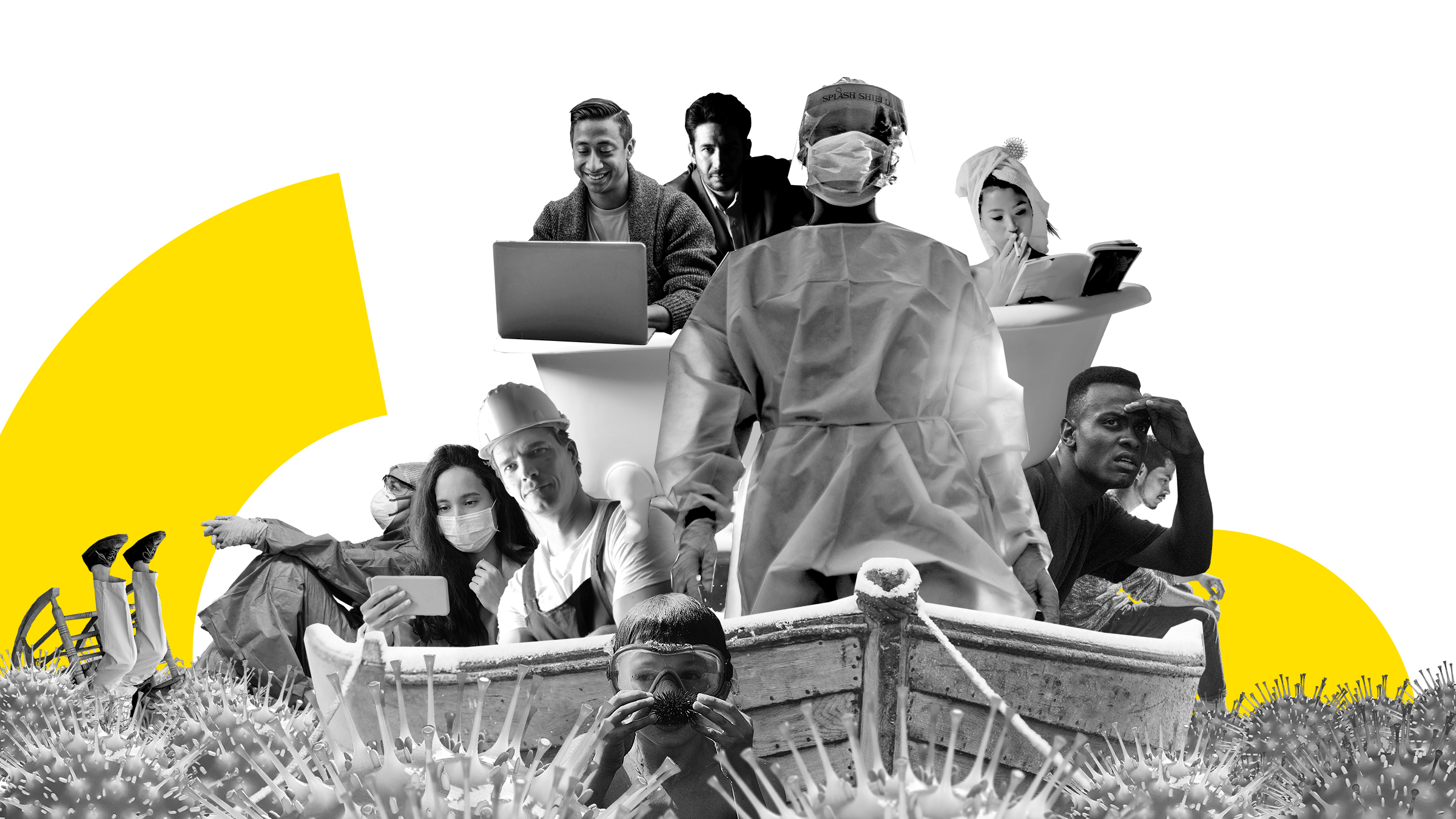



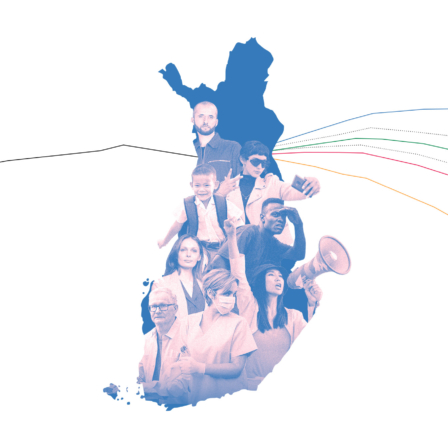

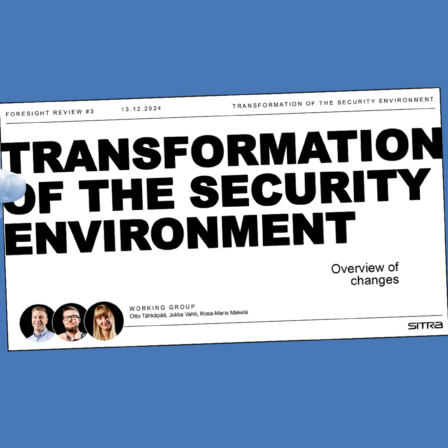
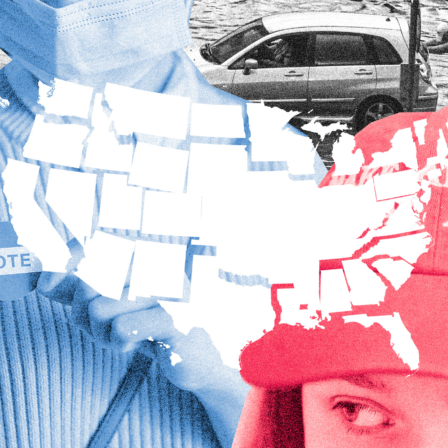




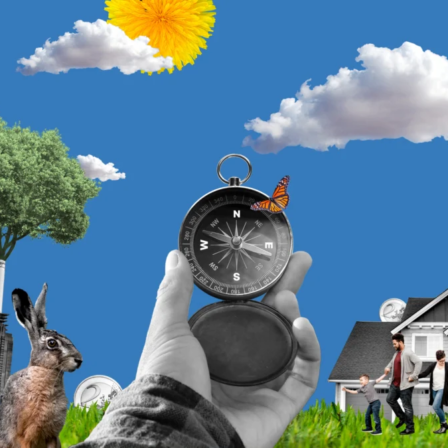

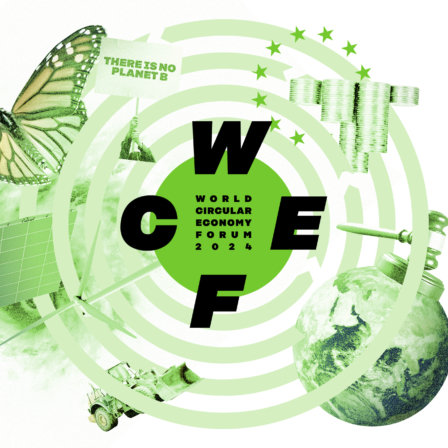
Recommended
Have some more.